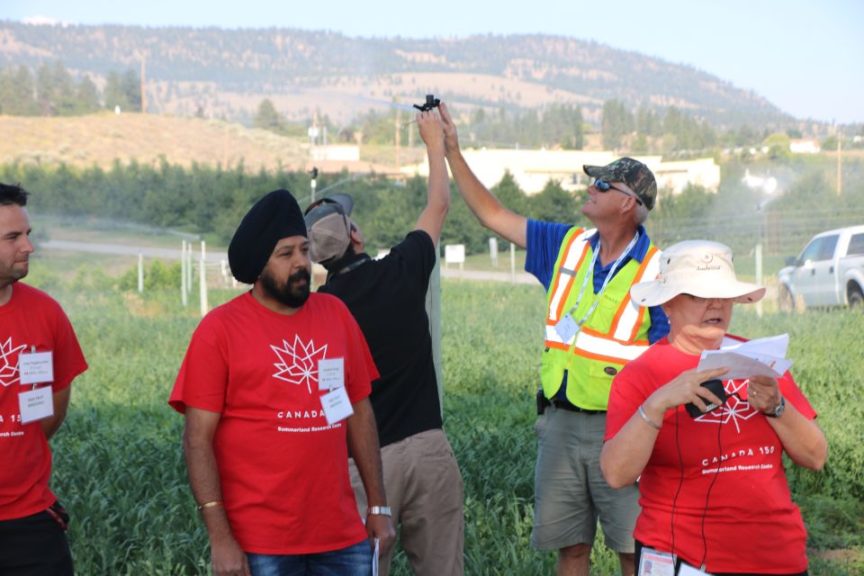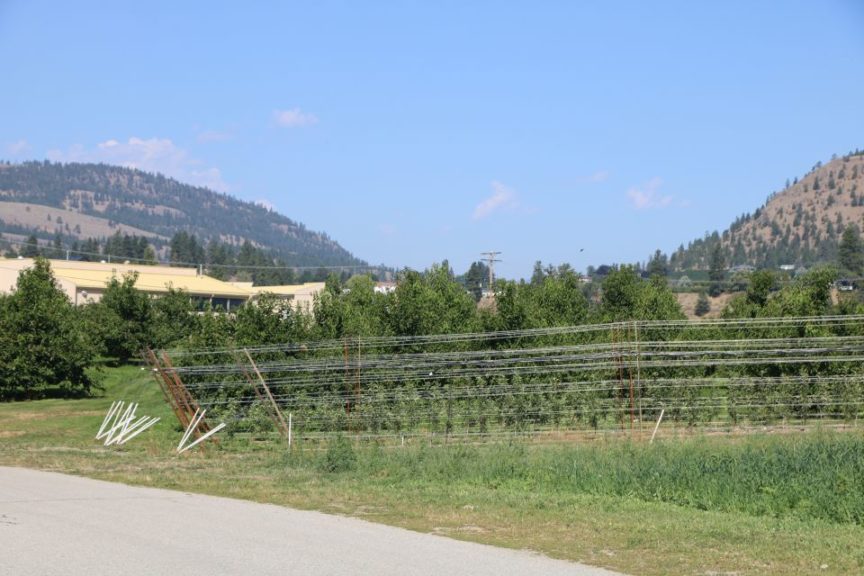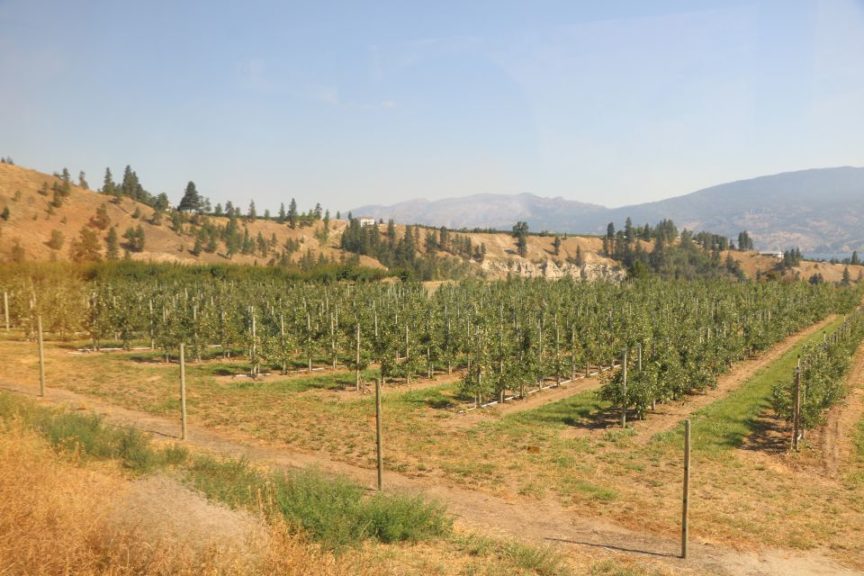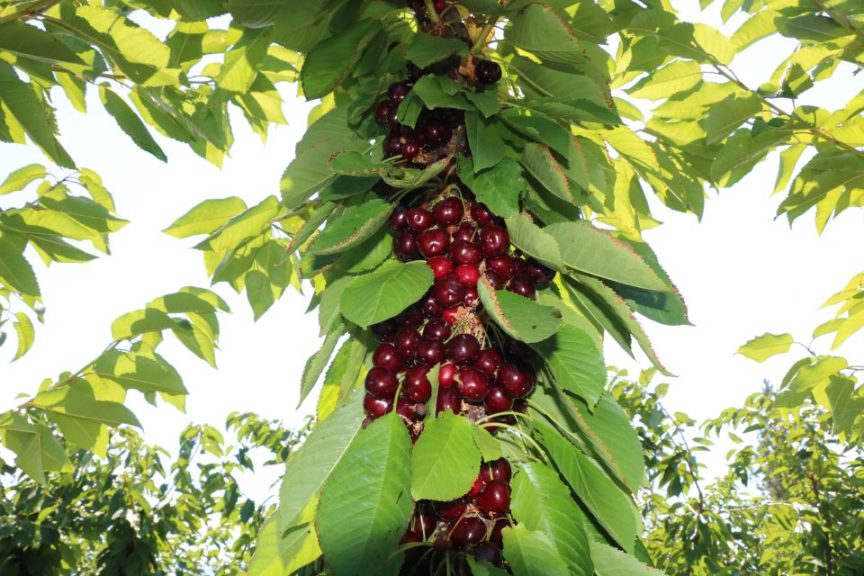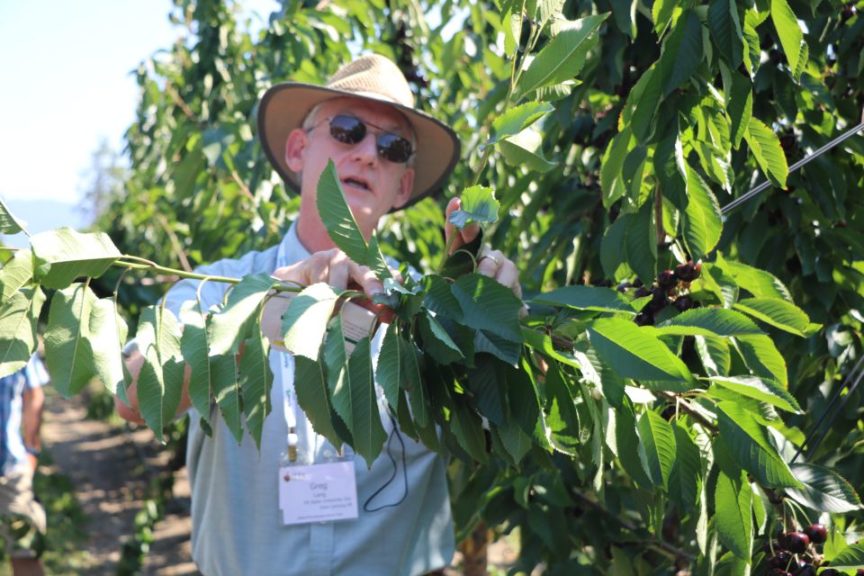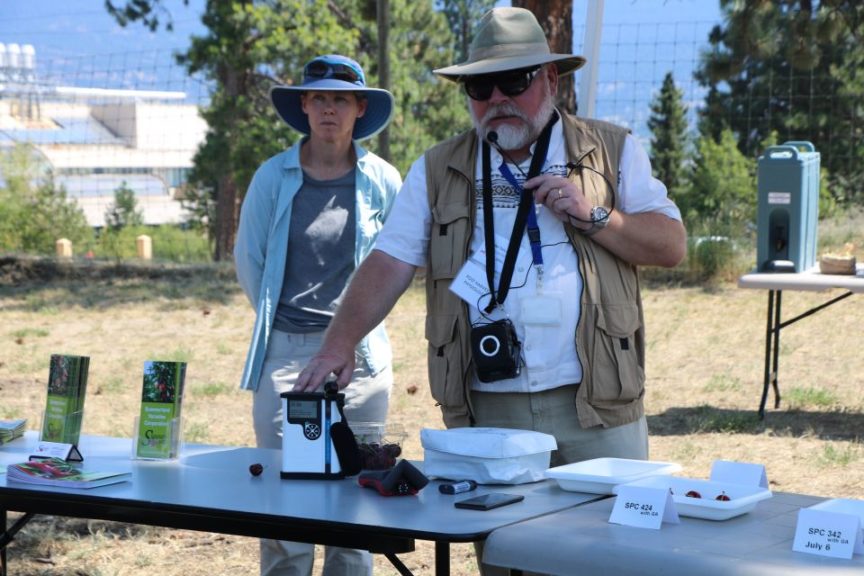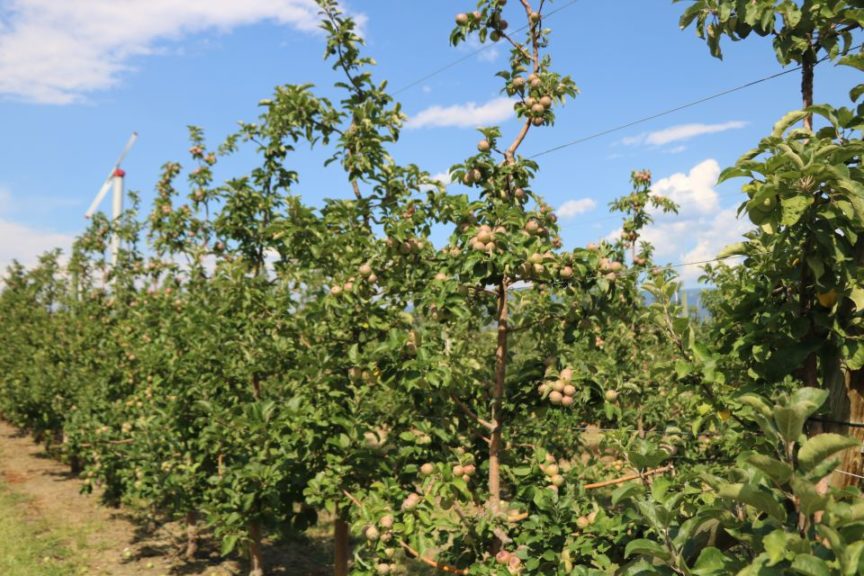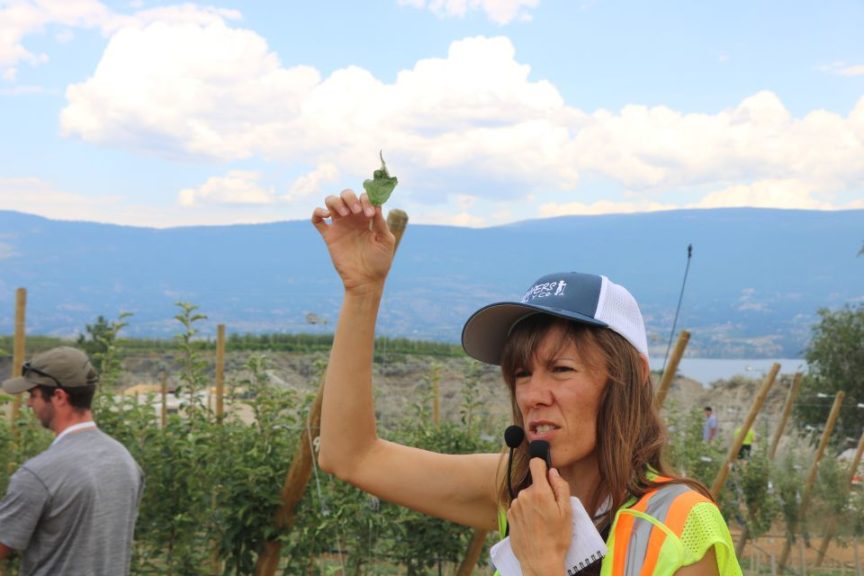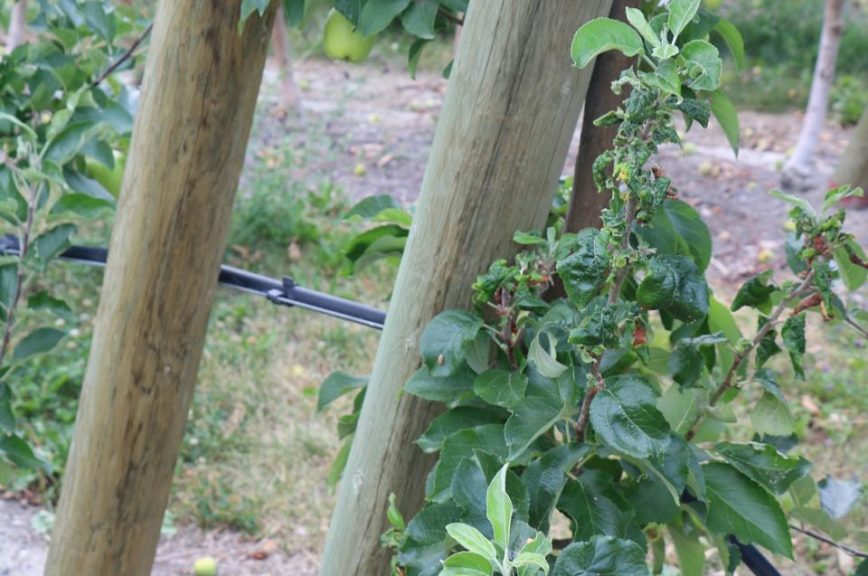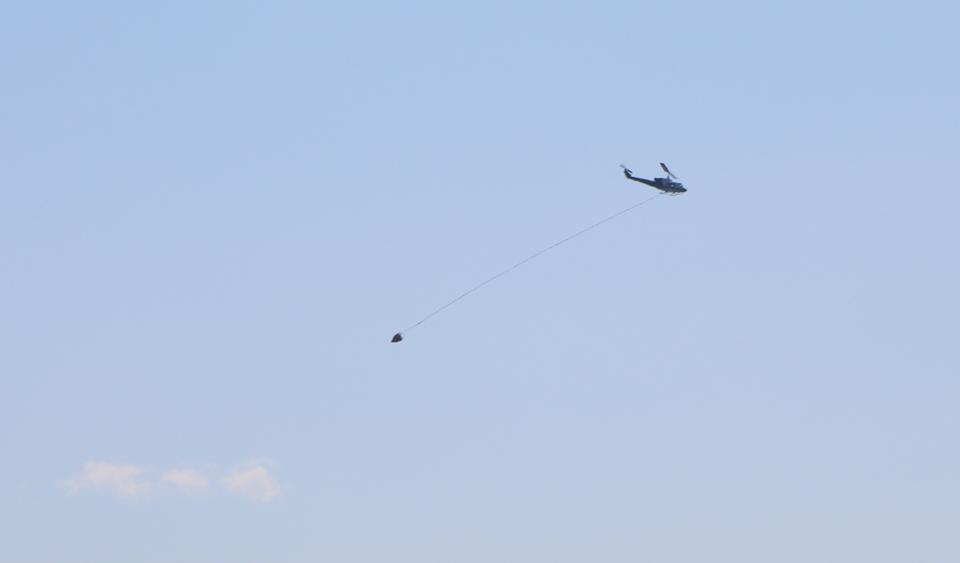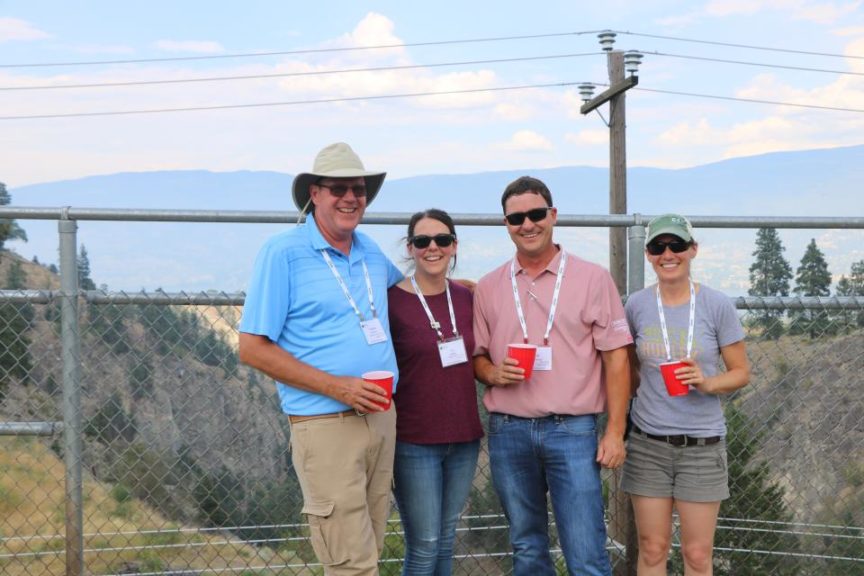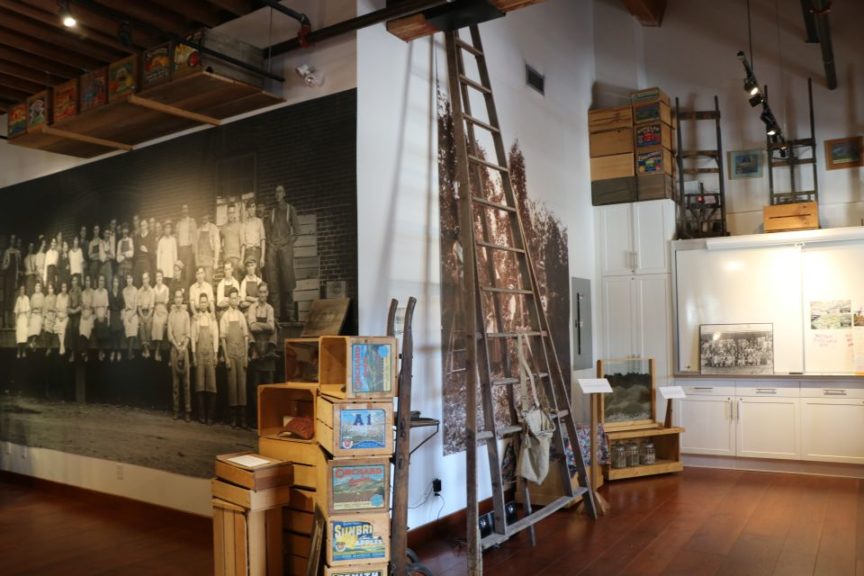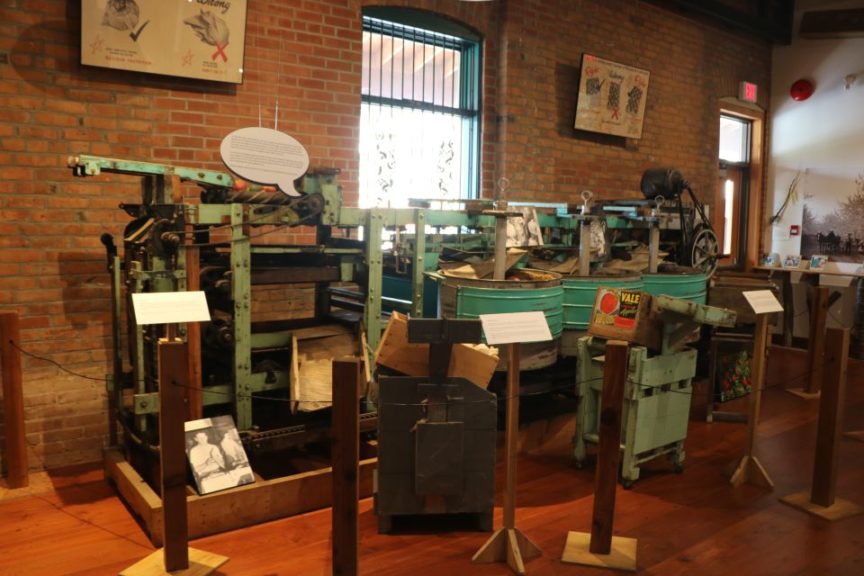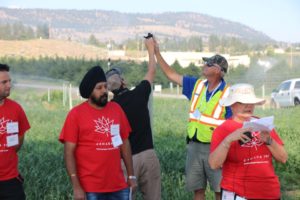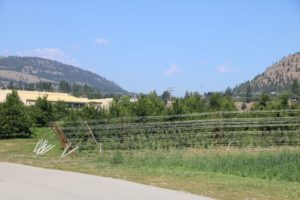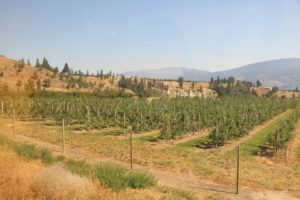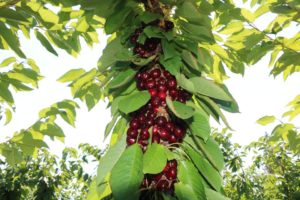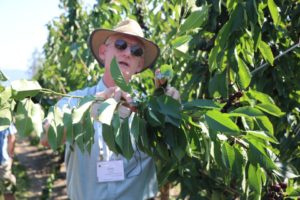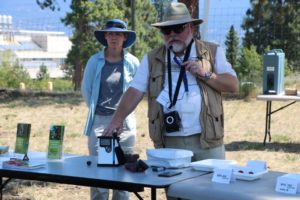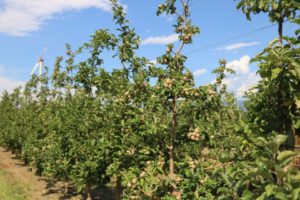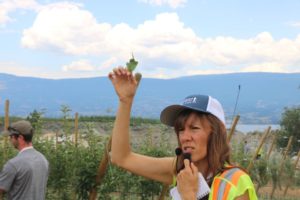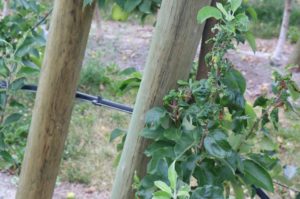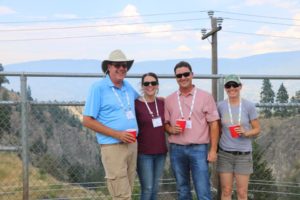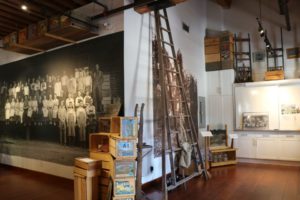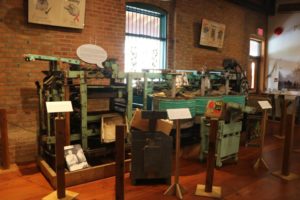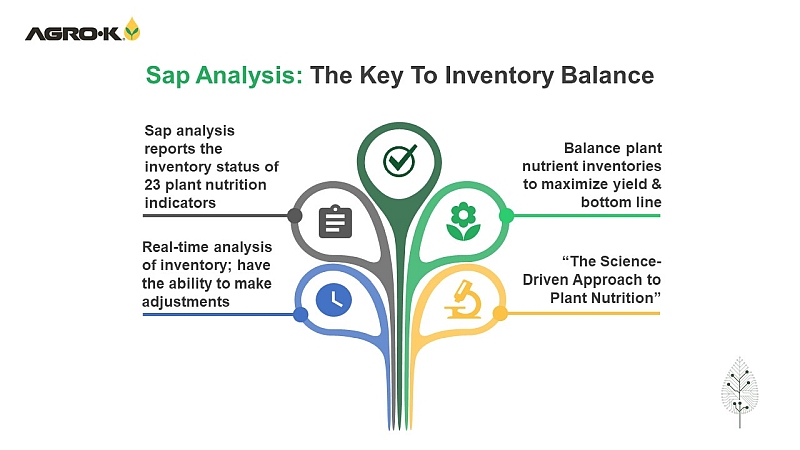IFTA Summer Tour Rolls North of the Border With Cherries on Top
If you’ve ever eaten or grown a ‘Sweetheart,’ ‘Skeena,’ ‘Stella,’ ‘Staccato,’ ‘Sonata,’ ‘Sonnet,’ ‘Van,’ or ‘Lapins,’ you’ve no doubt come in contact with the work of one of the most influential cherry breeding facilities in the world – the Summerland Research Station in Summerland, B.C. This was the first stop on the International Tree Fruit Association’s summer tour in – you guessed it —British Columbia, Canada.
Summerland Research Station is known for releasing cherry varieties that are self-pollinating and tend to have a name that starts with S. The research station also has a robust apple breeding program as well. Currently, the station has 30,000 different apple cultivars in its breeding program and about 6,000 in its cherry breeding program.
“Every one is different,” Chris Pagliocchini, a Biologist in the Tree Fruit Breeding program, says. “We’re trying to find the next big thing.”
Pagliocchini says they’re working to identify scab resistance in the apple breeding program; but in the future, they’re looking to develop genetic markets for fruit size, powdery mildew and fire bight resistance, and also genetic markers to determine harvest time. To do this, the research team with the breeding program crosses varieties that are polar opposites. For example, soft flesh and firm flesh or early harvest and late harvest. This will help the research team identify the markers for these traits.
“There are so many pollen-borne diseases,” says Pagliocchini of cherry breeding.
So the challenge, he says, is keeping viruses and diseases out of the cherry breeding program. As advanced selections are to be released, they are cleaned at the Centre for Plant Health in Sydney, B.C. The cherry breeding program also looks to cultivars that are past June harvest stages and are self-fertile.
“All our selections won’t necessarily be self-fertile, but it has to be exceptional in other ways,” Pagliocchini says. “June is a wet month. So the further away from June we are, the less splitting we have.”
There are three stages to the breeding program, the 30,000 apple and 6,000 cherry cultivars fall under stage 1, where it’s a single tree of each cross. In stage 2, there are eight of each cultivar randomly planted. The research team is screening for yield, taste, texture, storability for five fruiting years. Pagliocchini says the team blindly evaluates everything and recordkeeping is a vital process of keeping the location of each tree and the progress of each variety.
“It’s a constant process,” he says.
Advanced selections that move on to stage 3 are planted in commercial orchards, with a 50 copies planted at the research station. But, to monitor all stages of the variety development is tedious, and the research station is looking for ways to automate some of the screening processes.
“It takes a team of people to go through the field,” Pagliocchini says.
For all the cultivars that don’t make it through the program, they are kept in a larger germplasm repository, which also hosts varieties that are 100 years old or more. Pagliocchini says some of these cultivars may have a distinct trait or gene that they’re looking for in future crosses.
There are a few sweet cherry selections that are moving toward release, says Nick Ibuki, the Operations Manager for Summerland Varieties Corp., who manages the release of all new cultivars out of the research station.
Currently, the latest sweet cherries in British Columbia are harvested around Sept. 5. B.C. makes about 95% of sweet cherry production in Canada. Four varieties nearing release in the next few years all have better qualities than the current standard for that time, Ibuki says.
‘SPC 414’ is around ‘Bing’ timing but with low splits, good productivity, and a size of about 11.5 grams. ‘SPC 342’ is a large cherry with ‘Skeena’ texture and flavor, lower splits, 12.5 gram size, and excellent stem retention, but it is not self-fertile. ‘SPC 335’ is around ‘Lapins’ timing, with high firmness, it’s not as productive as ‘Lapins,’ but it is good for boutique growers with an eye to export markets. ‘SPC 411’ is similar to ‘Sweetheart,’ but without the nose cracking that can be prone to ‘Sweetheart.’ It also has similar splits to ‘Regina,’ but with better size and firmness. Ibuki says it is firmer than ‘Sentennial,’ which was the gold standard for fruit firmness.
While the day wasn’t entirely focused on just fruit breeding, tour-goers learned about some of the other research projects being conducted at the station. Stops also focused on hard cider apple production and also the challenges of super spindle production in various soil types.





